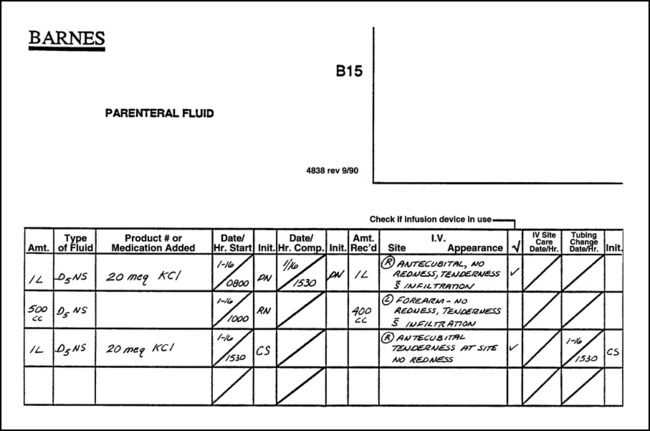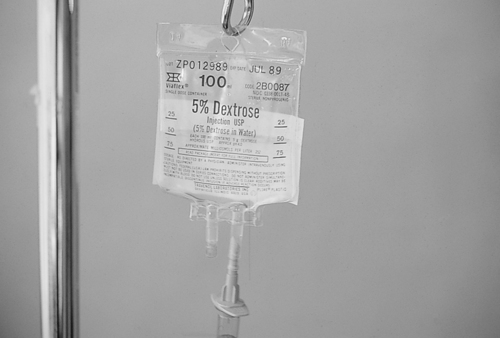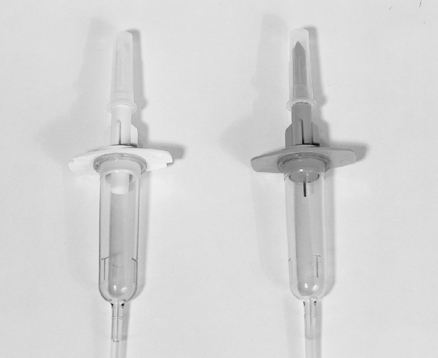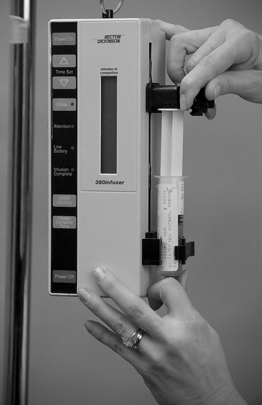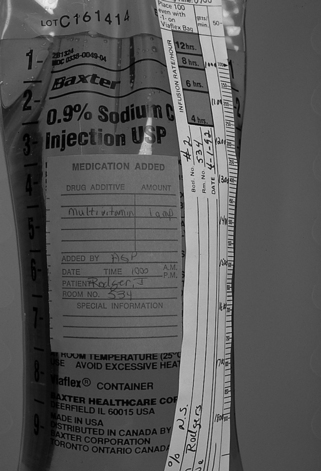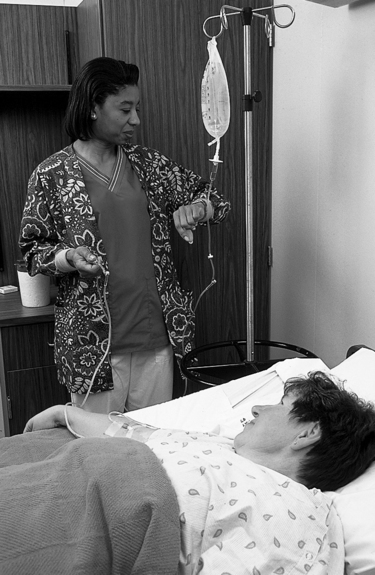Chapter 8 Upon successful completion of this chapter, the student will be able to: • Identify the equipment and supplies needed to initiate IV therapy as ordered by the medical professional. • Assemble the equipment necessary to prepare to perform the venipuncture. • Select and prepare the proper site for IV therapy. • Consider appropriate site selections related to rapid infusion, other needs for venous access, and patient comfort. • Develop knowledge of the skills of venipuncture needed to initiate IV infusion therapy. • Understand the care, assessment, and maintenance of the infusion site during infusion therapy and the replacement of the fluids and medications, as ordered. • Perform the discontinuation of IV therapy, including dressings and assessment of site. Intravenous (IV) therapy is used for many medical reasons, and patient safety is always of utmost importance when this therapy is performed. The actual procedure for initiating the infusion of fluids is basically that used for venipuncture, with additional threading of the infusion device into the vein. The use of IV therapy has increased in recent years and patient safety has been improved by the continuous improvement of IV supplies and pump technology. What was essentially an inpatient procedure in the recent past has become a therapeutic measure now found in ambulatory care. In either setting, the equipment, supplies, initiation, and care of the infusion site, as well as assessment of the patient throughout the procedure, are the same no matter where the infusion therapy occurs. The initiation of IV therapy requires several considerations. The first step, as in all pharmacologic procedures, is to confirm the physician’s order. A review of the patient’s history is necessary, appropriate, and valuable. Hands are sanitized, as before any procedure. Supplies and equipment are assembled and transported to the patient’s location, and the identity of the patient is confirmed verbally and by electronic detection systems as appropriate at the site of employment. In most situations, patient assessment is performed to establish a baseline for future assessments. The procedure should be explained to the patient and the patient made comfortable. The equipment is assembled, the potential venipuncture site is assessed, the skin is prepared, and then the venipuncture procedure is performed. Following the venipuncture, a dressing is applied to the site, the tubing is stabilized, and the patient is observed for tolerance of the procedure. During the infusion process, the patient and the infusion site need to be assessed frequently, and when the infusion is complete, the IV is discontinued. After the venipuncture device is removed, the site should be observed for possible complications. Once the procedure is complete and the patient appears stable, he or she receives care according to the physician’s order. Documentation of the procedure must be completed (Figure 8-1). • Any medication to be added to the solution • Amount of solution to be infused • Time over which solution is to be infused or the time appropriate for the number of milliliters • Information about the patient’s present illness. This may help to assess how his or her fluid balance may be affected by the IV therapy and the expected results of therapy. • Medication or other treatment the patient is receiving. • The patient’s ability to take oral fluids and nutrition. • The relationship of fluid intake and output. The hand sanitization procedure is performed as the first step in infection control because this technique helps to remove microbes on the clinician’s hands (Figure 8-2). The container of solution selected must be carefully checked against the prescriber’s order for type of solution and the prescribed amount. The pharmacist in an inpatient setting will prepare the ordered fluids in most instances, whereas, in an ambulatory care, the person initiating the therapy may be responsible for selection of the IV fluids ordered. In some facilities, the pharmacy may send the administration set with the pharmacy order for fluids. Even if the set comes with the fluids, the person initiating the infusion should check the tubing, administration set, and fluids for accuracy to the physician’s order, because the person administering the fluids is ultimately responsible for the infusion (Figure 8-3). Each type of solution may require special administration sets. It is best to check with a pharmacist, if available, about the type of administration set required when drugs have been added to the solution. If a pharmacist is not available, be sure the order contains the desired flow rate. Also, the prescribed rate will dictate if a microdrip set or a macrodrip set is indicated (Figure 8-4). Additionally, the use of an infusion device or pump will require special tubing that is used with that specific pump. Refer to Chapter 4 for additional information on equipment. Different types of infusion devices are available. The clinician should be familiar with what is available in the facility and understand how each works (Figure 8-5). The regulation device should be set for the flow rate, but the actual infusion rate should be evaluated on a regular basis. Refer to Chapter 4 for additional information concerning types of infusion regulation devices available for use. When an infusion device is not being used, the measurement tapes are applied to the bag or bottle of solution (Figure 8-6). These tapes indicate the time line for the fluid infusion and allow the health care professional responsible for the infusion therapy to check that the fluids are flowing at the correct rate. Remember, this does not provide an entirely accurate flow rate, but rather an estimation. The volume of fluids infused should be checked and compared to the physician’s order on a regular basis. Various systems are available to suspend the solution container. Adjustable freestanding poles may be used, especially for patients who are ambulatory (Figure 8-7). Other poles may attach to chairs, beds, or gurneys. In locations where the IV fluid container will not be moved, devices such as loops or hooks suspended from the ceiling or other suspension systems may be used. The systems used with ambulatory patients also have the ability to be adjusted to place the fluid container at the desired height for the desired flow rate.
Starting an Intravenous Infusion
ORDER FOR IV THERAPY AND ASSESS PATIENT
GATHERING OF EQUIPMENT
Correct Solution and Amount
Correct Solution Administration Set or Tubing
Devices for Regulation of Fluid Flow
Measurement Tapes for Marking Flow Rates
Appropriate Device for Holding Solution Container
Musculoskeletal Key
Fastest Musculoskeletal Insight Engine

